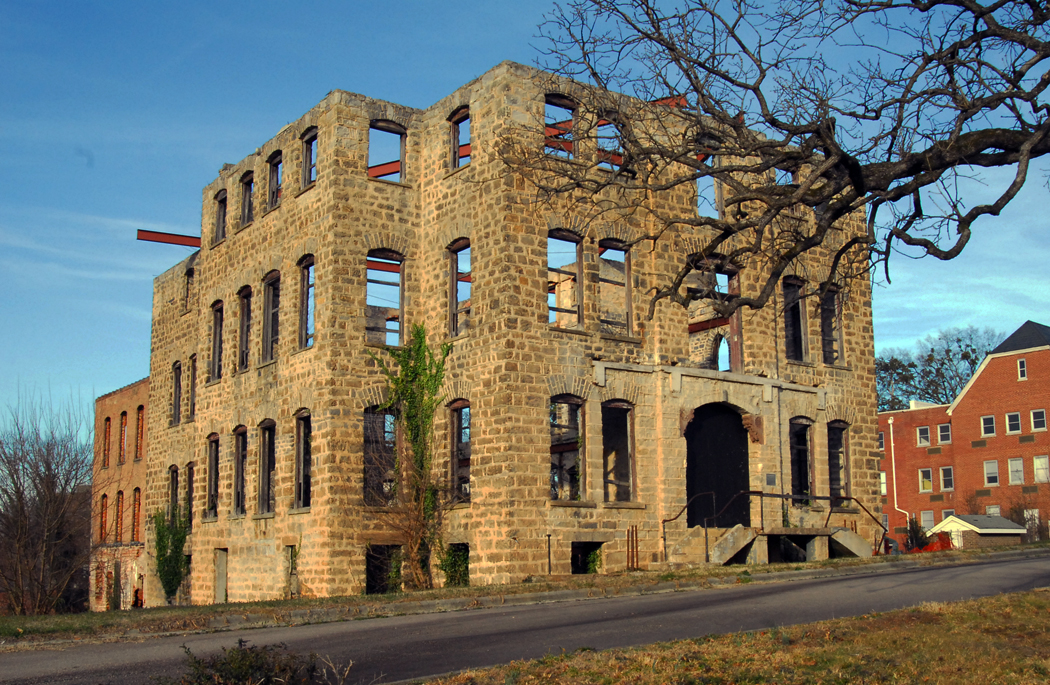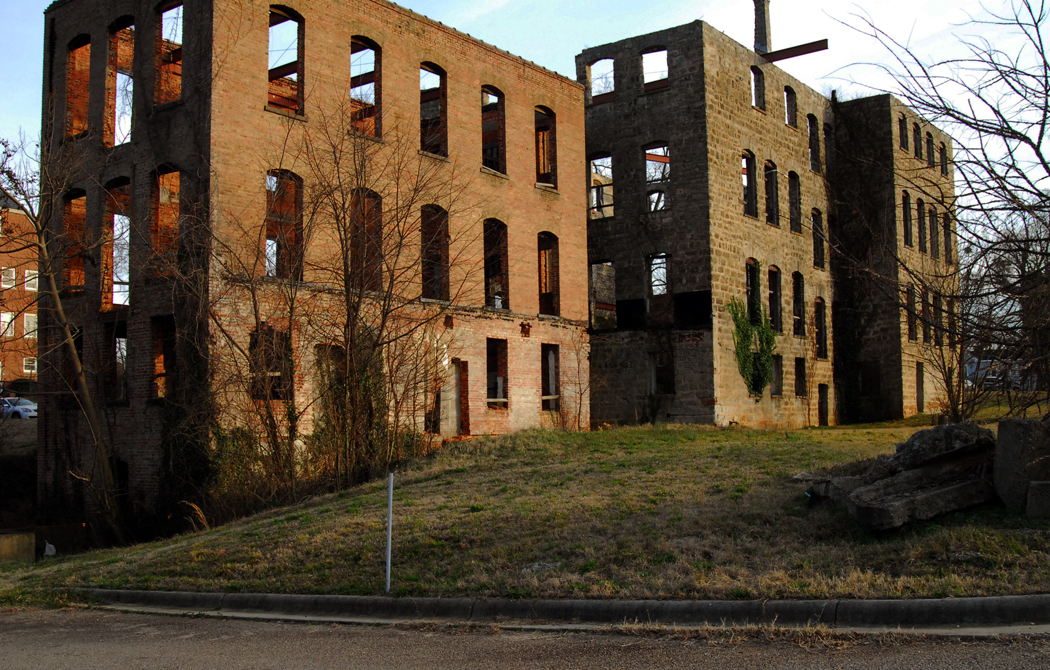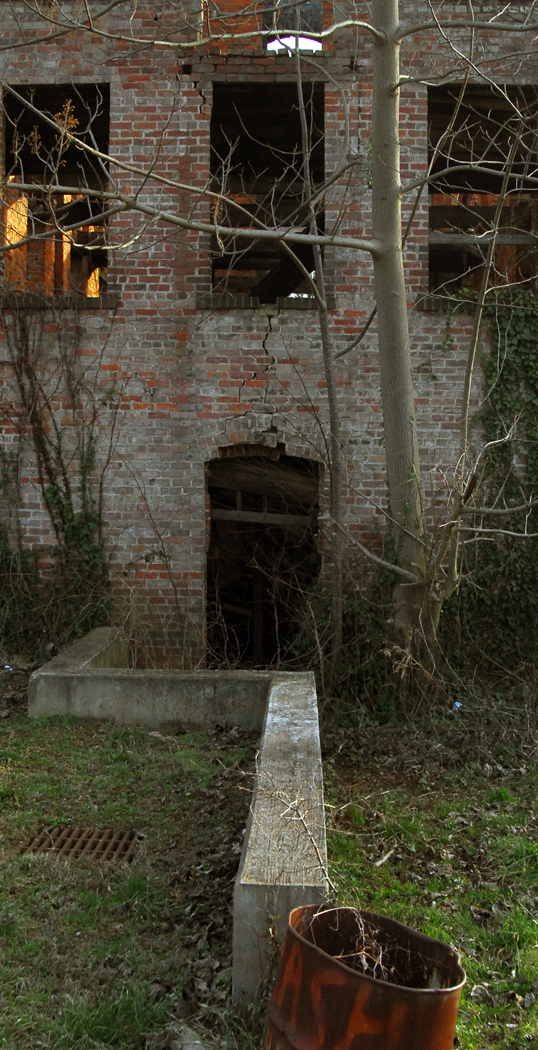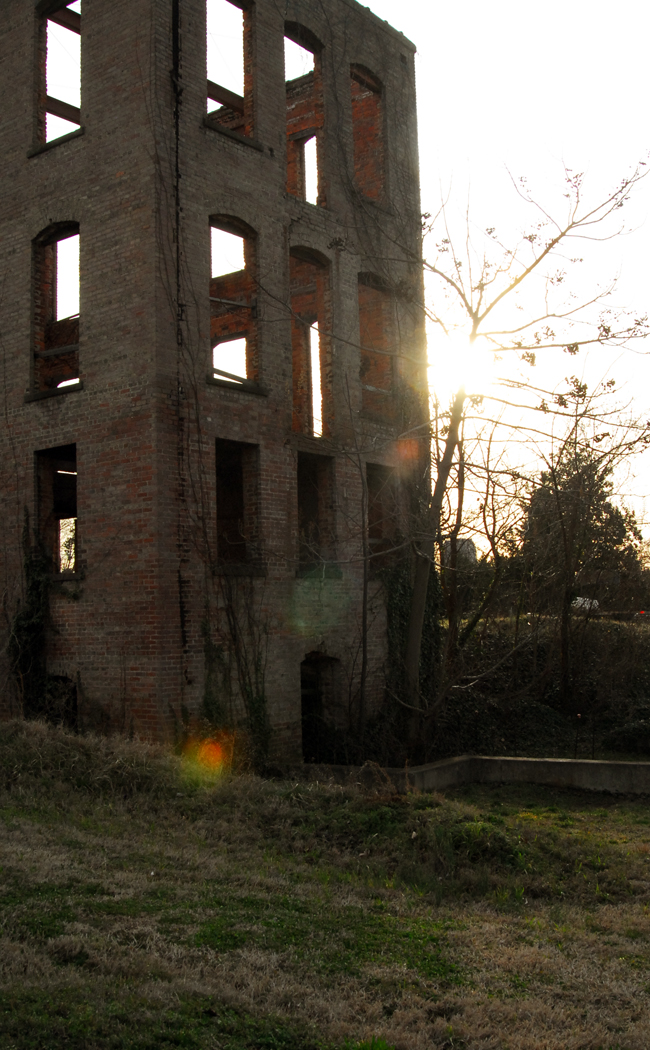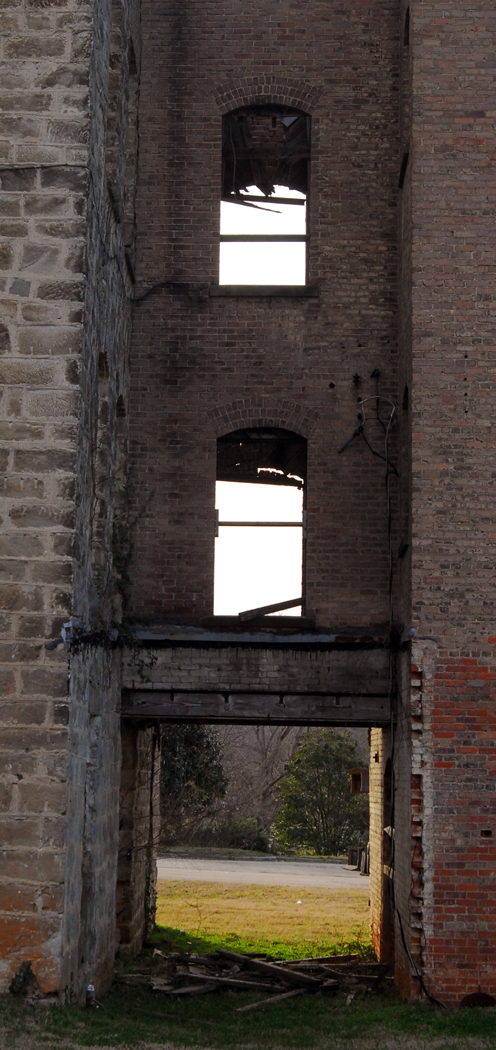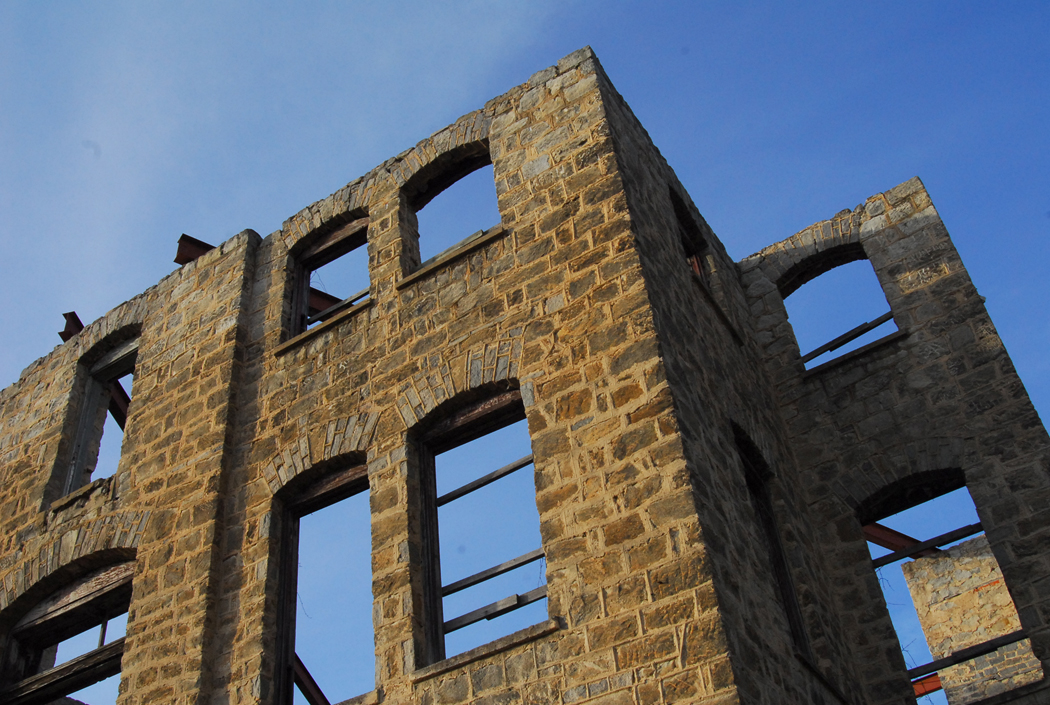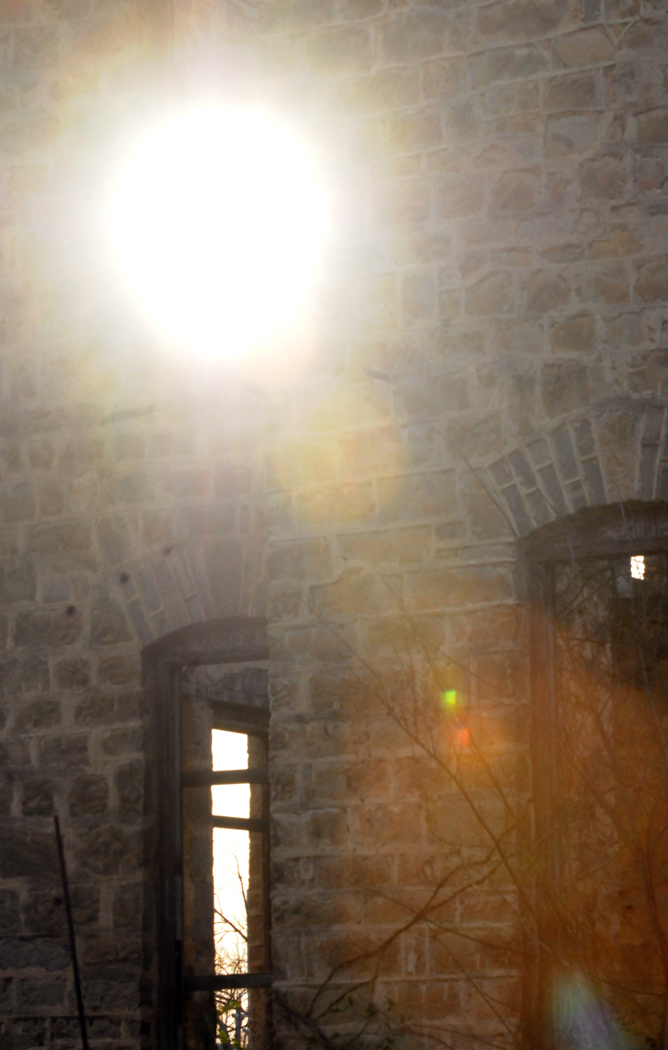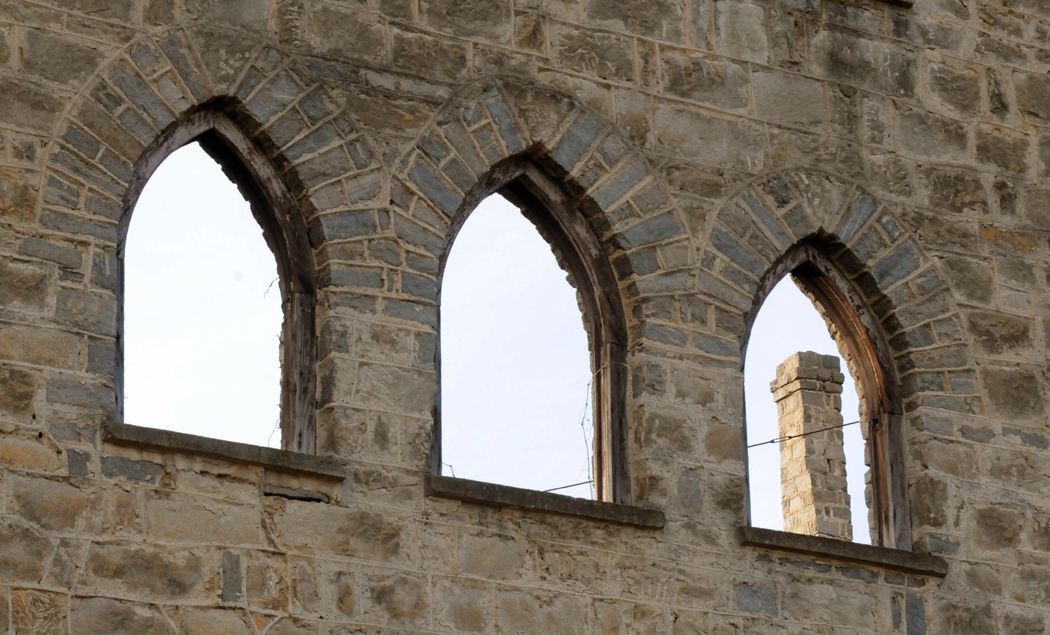Only weeds occupy the stately stone structure that once housed the largest hospital in the Southeast serving African-American patients.
But soon, walls and windows will be built within the three-story shell of a building at State Street and Oakwood Avenue in East Raleigh. A roof will top it, and doctors, nurses and medical students will again roam its halls to aid the ill in downtown Raleigh.

Karen Tam
Ivy climbs up the outside wall of St. Agnes. Photo by Karen Tam.
Ten-year-old plans to restore the 104-year-old St. Agnes Hospital building will finally take shape this year, say leaders of St. Augustine’s University and TradeMark Properties.
The university and development group have signed an agreement to move forward with a $4.5 million project, which includes constructing a new building within the existing concrete shell along with an additional structure to house elevators, a lobby and restrooms.
When complete in 2014, St. Augustine’s will offer its first graduate-level degree program in the building. Students in training to become physician assistants will get clinical experience serving patients in a new urgent care facility, likely to be operated by Rex Healthcare.
“Our goal is to preserve the St. Agnes shell and create new community-based healthcare services there,” said Billie Redmond, CEO of TradeMark Properties. “It will redefine the corner of the campus for St. Augustine’s.”
The historically black college opened St. Agnes Hospital in 1896 to provide much-needed care to Raleigh’s black residents and train nurses to serve them. The project was championed by the principal’s wife, Sara Hunter. She raised the funds to initially open a small facility.
To meet a growing need for institutional health care in 1904, students at St. Augustine’s built the existing structure. Completed in 1909, it had 75 beds, the nursing college, and a nurses’ home adjacent, making it the largest of its kind between New Orleans and Washington D.C.

Karen Tam
Construction materials begin to pile up outside St. Agnes. Photo by Karen Tam.
St. Agnes operated until 1961, when WakeMed opened the first integrated hospital in the region on New Bern Avenue. (Halls in the hospital were still segregated until the Jim Crow laws were repealed in 1965.)
The building sat vacant for years before St. Augustine’s began considering new uses for the structure. In the early 2000s, the roof and walls were removed to stabilize the foundation and remove asbestos. TradeMark began its work on a master plan for St. Augustine’s property soon after. Redmond became passionate about the history of St. Agnes, and vowed to return the building to good use.
Tenants had lined up prior to the recession for a much larger $13.5 million project, the developer said. But that fell through when banks stopped lending. Discussions began again a year ago as economic conditions improved and St. Augustine’s planned for additional medical education degrees.

TradeMark Properties
A rough sketch of what the completed St. Agnes building may look like. Provided by TradeMark.
Rex Healthcare has since entered negotiations to operate in the building. Writes Rex Vice President of Operations, Chad Lefteris, in an emailed statement: “Rex remains committed to improving access to health care in downtown Raleigh … Rex remains very interested in being one of several tenants to participate in this exciting project.”
The physician assistant program will be a linchpin for the project. It’s among the fastest-growing professions in the medical field, in part because of pending Obamacare legislation that will require universal health care for patients and demand the time of doctors. Physician assistants are most necessary in rural and underprivileged communities without access to doctors, said St Augustine’s Provost Connie Allen.
She expects to begin enrolling students in Fall 2014, soon after the building is scheduled to reopen. Also under consideration to open within St. Agnes are new graduate programs in public and social health, and applied health education such as bioinformatics and biomedical statistics. Curricula will be created in partnership with other tenants in the building.
“There’s the idea that students will have the opportunity to train as an apprentice or internship or do clinical rotations that are absolutely necessary in the medical field,”Allen said.
A Look at St. Agnes
Photos by Karen Tam
Click an image to view full size.

